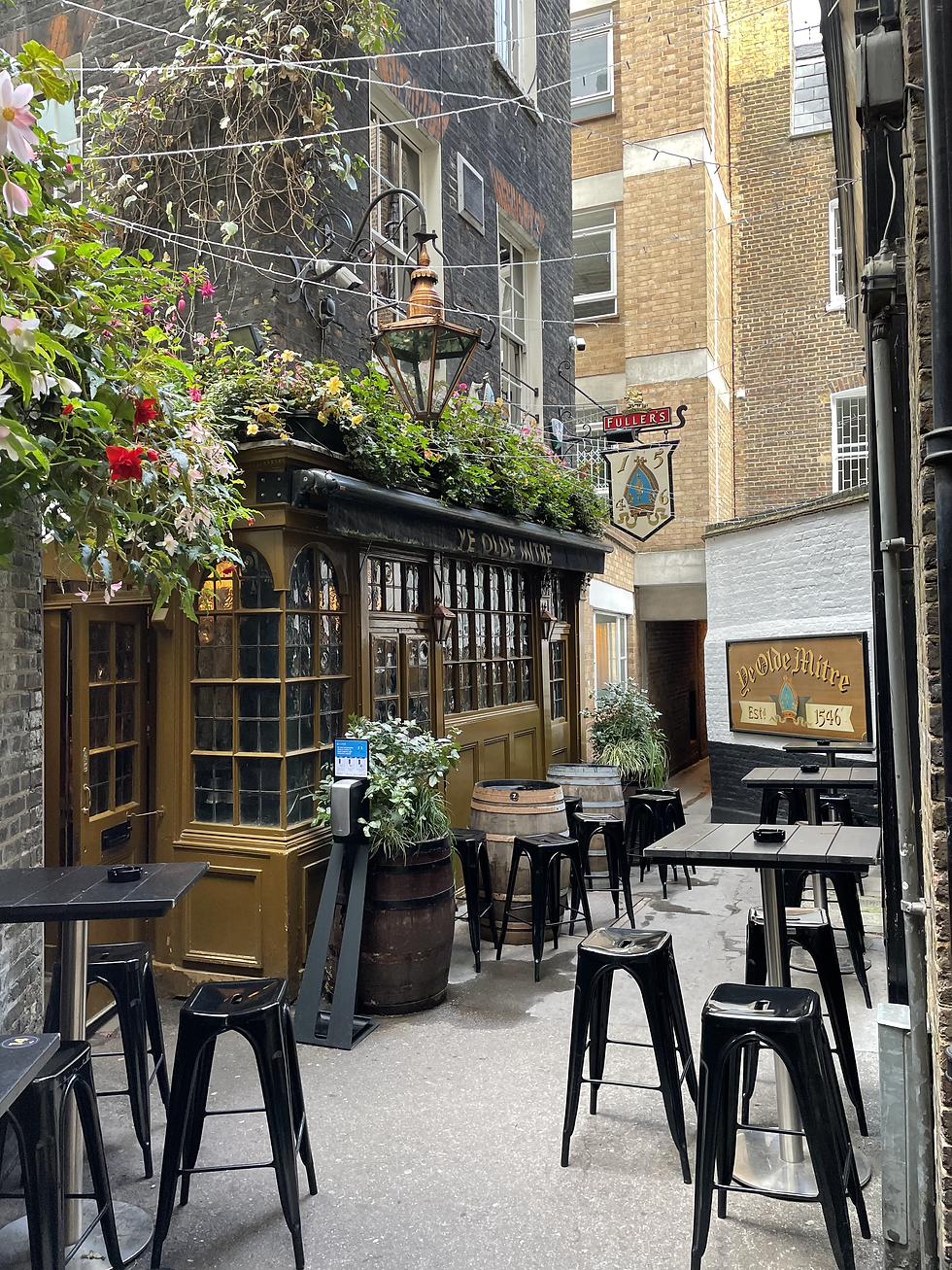Hidden Gems in London's Diamond District
- London Insider
- Dec 14, 2021
- 2 min read
If you are a magpie - head to Hatton Garden, where things that glitter and sparkle are aplenty. Hatton Garden is today famous as London's Diamond District - selling cut diamonds and gemstones. It takes its name from Sir Christopher Hatton, Lord Chancellor of England and a favourite of Queen Elizabeth I, who gave him the surrounding land. Near the junction with Holborn, there is a small alleyway, that leads to a different kind of jewel, a hidden pub. At the sign of the Bishop's Mitre, you will find an unassuming alleyway - Ely Court - that leads to one of London's hidden gems - Ye Old Mitre pub.
Ye Olde Mitre is a pub whose origins date back to the 16th century, when Queen Elizabeth I is said to have danced around a Mulberry tree in Sir Christopher Hatton's garden, the stump of which is still visible. A pub has been on this site since 1546 - though the current incarnation dates to about 1770s, and has been renovated many times since, though it retains all of its historic and period charm.

If you continue through the alley, past the pub, you come to another hidden gem - Ely Place. This is all that remains of what had been the London home of the Bishops of Ely from 1290 to 1772. Ely is in Cambridgeshire, but as Bishops were frequently needed to attend court, they required a London residence - Ely Palace - which was located here, in this gated cul-de-sac.
St Etheldreda's Church dates to between 1250 and 1290, one of only two surviving buildings from the reign of Edward I, the other being the Tower of London.
St Etheldreda's is a Catholic Church that was dissolved, but not destroyed, in the Reformation of the 1530's. It was then used for Anglican worship until 1642, when Oliver Cromwell's forces used it as a prison and hospital during the English Civil War. During the Commonwealth 1649-1660, the palace was demolished and the gardens were destroyed.
During World War II, the chapel was damaged, losing all its Victorian stained-glass windows, which were replaced in the 1950s. In the 1960s, 8 statues of Catholic martyrs from the time of Henry VIII and Elizabeth I were installed along both sides of the nave.
These are just some of the miraculous survivors to discover throughout the city and well worth a visit to this hidden corner of London.





















Comments